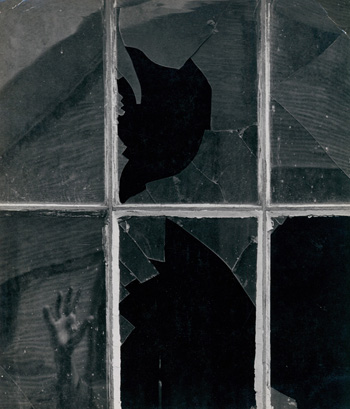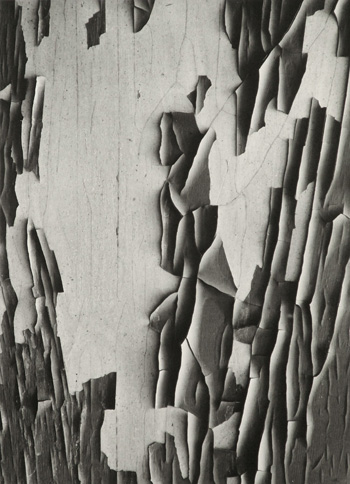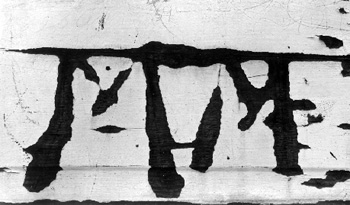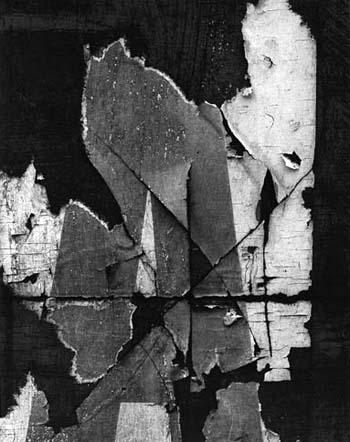
|
||
|
Portland art blog + news + exhibition reviews + galleries + contemporary northwest art
|
||
Aaron Siskind at Charles A. Hartman Fine Art
"If you look very intensely and slowly, things will happen that you have never dreamed of before." I was caught a little off guard when I walked into the Charles Hartman Fine Art to see a show of Aaron Siskind's photographs. In most of my favorite photos there is no object in the picture. Just a surface. More often than not, it is decaying as we silently watch it. In his best photos he destroys the object in the same way that the best abstract expressionists destroyed the figure. More accurately, the body is what filters the experience, both of the photographer and the viewer, rather than being the object. Siskind's photographs are famous as examples of the ideas of Abstract Expressionism branching out into other mediums including photography and sculpture. Elaine De Kooning even wrote the forward to an exhibition he had at the Charles Egan Gallery in 1951 as she had done for Mark Rothko a few years earlier. In the show at the Charles Hartman there a few pictures of disembodied feet, a lone glove and the reflection of hand, the pictures that moved me were the ones about nothing. With the pictures of the surfaces, you never feel the eye of the photographer behind the camera. We are left to explore the surfaces by ourselves. I think that is why I was reacting against some of the pictures of the feet and the glove, they were too beautiful. I think that I might have been in good company, because I got the feeling that he liked the human body as a form rather than as a vessel for a soul. In the pictures of feet or the lone glove on left on charred wood, you could sense the arrangement of the composition, what he wanted out to the picture: good compostion, good lighting, good photograph. My favorite photos go much deeper. He is studying us by what we leave behind, as if to see our culture for the first time.
I think that is why he liked the photos of poster's peeling off the wall. It is like the posters have one life when they are new and serve the purpose they were designed for, but who is to say they do not have any equally important message when they decay and fall apart. The best photos are like Gloucester 3 and Jerome 20 where just wander across and explore this beautiful surface. It is not a surface that was designed but is built by the leftovers and things that we don’t want. I think that was the big difference between the photos of the body and the photos of the walls is that in the photos of the body it was everything he wanted, everything that photography is about. In the pictures of the walls that all goes because they are things that nobody wanted and we are led to a place far more interesting. By exploring the surfaces of the things that Siskind found tearing away from walls or from detritus in the street is important because he found a language that paralleled the line of thought that was being developed by the Abstract Expressionist painters: Jackson Pollock, Willem De Kooning, and Franz Kline to name a few that are relevant to the show. The photos are unforced and natural. The photos that I liked were the ones that were like walking down the street and finding the natural equivalent of Pollock drawing or a De Kooning painting. He was using the same language but in a different medium. Who knew that in Chicago 14 he would find a precursor to Pollock's drawings with ink and Japanese paper? Like the best painters it hard not to equate what is happening in the photos to actual tactile qualities of the gelatin silver print itself. The whole experience becomes self referential like a feedback loop, a discourse on the medium of photography. We see one charred and torn paper slowly peeling away from an old wall in Chicago 1960 and it is like something like Twombly or Rauschenberg would have done if they were drawing with a razor blade and a blow torch. How can we not compare the paper in the photo to the paper it is printed on? For me, the photos begin to become a meditation of the transcendence of life and death, or what happens when we are no longer useful.
Like the best art Siskind's photos bring a deeper understanding of the medium and like the best photographers we see ourselves in his pictures. Except in Siskind's case, it is not who we are but what we leave behind that matter.
Posted by Arcy Douglass on January 14, 2008 at 0:27 | Comments (0) Comments Post a comment Thanks for signing in, . Now you can comment. (sign out)
(If you haven't left a comment here before, you may need to be approved by
the site owner before your comment will appear. Until then, it won't appear
on the entry. Thanks for waiting.)
|
| s p o n s o r s |
 |
 |
 |
 |
 |
 |
 |
 |
 |
 |
 |
 |
 |
 |
 |
 |

|
Site Design: Jennifer Armbrust | • | Site Development: Philippe Blanc & Katherine Bovee | |





